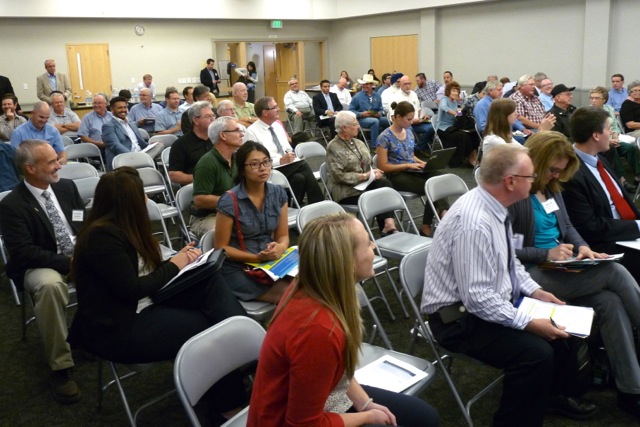water bond
IFPRI Tackles More Food with Less Water
IFPRI Tackles More Food with Less Water
By Patrick Cavanaugh, Deputy Editor
Feeding a growing population is significantly dependent on irrigation—not only expansion but making existing irrigation more effective. The expansion of irrigation and water supplies has been limited by growth in demand from other sectors, like urban and industrial usage, but also livestock and aquaculture, noted Mark Rosegrant, director, International Food Policy Research Institute (IFPRI) Environmental and Production Technology Division.
“Obviously, the water sector is facing several challenges, not just in California, but around the world, including declining water quality, falling groundwater tables, and growing environmental demands for water that further restrict availability for irrigation and agriculture,” he said. “With climate change, we also will see changes in the volume and pattern of rainfall in crucial production areas that also will have negative effects in the developing world.”
“So the potential for significantly increased water scarcity in terms of water quantity and quality could put much more stress on the potential for meeting future food demand and food security,” Rosegrant said. “Thus reforming water management policies and investments to improve water use efficiency is critical to food production. Increased flexibility and adaptability of water systems to stress will need to be developed and strengthened,” Rosegrant explained. “We also need to look outside the water sector, purely defined, to things like agriculture and productivity growth through investment in the talks here.”
Rosegrant said though it is seems like there is a big water meeting around the world at least once every week, the contributions of IFPRI’s water research meeting held in Bonn, Germany last week, “Bonn 2011 Conference: The Water, Energy, and Food Security Nexus–Solutions for the Green Economy,” offered advantages and differences. “First, as you can see, we are not only looking at problems, but also looking at very highly interdisciplinary solutions, whether they be in engineering, hydrology, economic policy, or macro-policy. IFPRI also brings together academics, policy makers, development banks, politicians and NGO’s as well,” said Rosegrant.
“Finally I think it is very much an international meeting, we share global experiences for many regions of the world, but also with a strong focus on California, which not only faces extreme water difficulties, but also has probably the best ability in the world to deal with those kind of water crises. So many lessons can be learned from the California experience for the rest of the world,” he concluded.




















